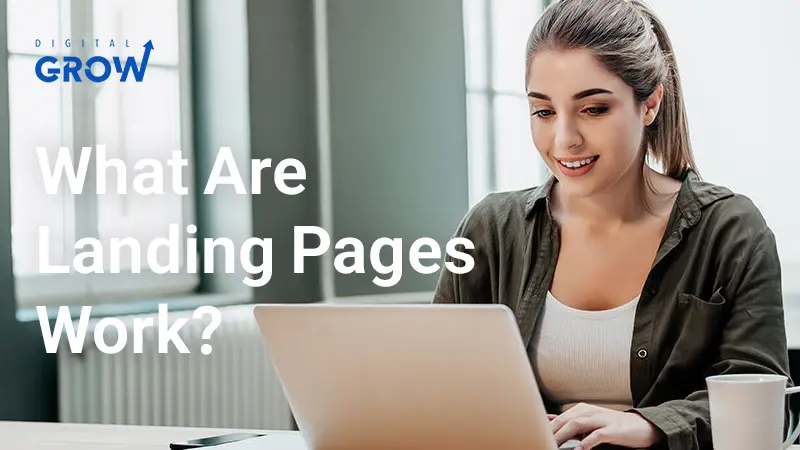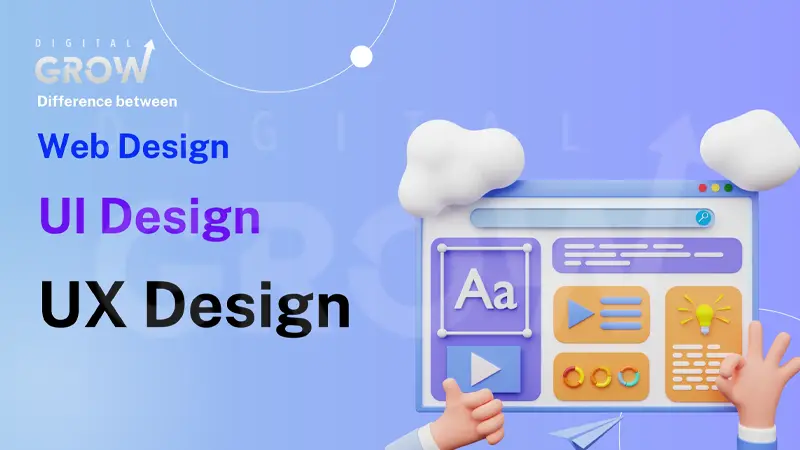In digital marketing, landing pages play a crucial role in generating leads, increasing conversions, and driving targeted actions. But what exactly is a landing page, and how does it work?
At Grow Digital Agency, we understand that having a well-optimized landing page can make the difference between a visitor bouncing off your site and a potential customer converting into a sale. Whether you’re running Google Ads, social media campaigns, or email marketing, an effective landing page can significantly boost your results.
This guide will take you back to basics, explaining what landing pages are, how they work, and how to optimize them for success.
Understanding Landing Pages
What Is a Landing Page?
A landing page is a standalone web Tab designed to capture leads or drive a specific action. Unlike a homepage or service Section, a landing focuses on one goal, such as:
- Encouraging users to sign up for a newsletter.
- Getting potential customers to fill out a contact form.
- Promoting a special offer or discount.
Landing pages are highly targeted and often linked to ads, social media campaigns, or email marketing.
How Landing Pages Differ from Regular Web Tabs
- A regular web tab (e.g., your homepage or blog) serves multiple purposes, providing general information about your business. In contrast, landing are built for one goal:
Single CTA (Call-to-Action) – No distractions, just a clear message. - No Navigation Menu – Keeps visitors focused on the conversion goal.
- Targeted Messaging – Designed for a specific audience from ads, emails, or promotions.
Why Are Landing Pages Important for Marketing?
- Landing pages are essential because they:
Improve Conversion Rates – They guide visitors toward a single action. - Enhance Ad Performance – A dedicated landing ensures higher relevance for paid campaigns.
- Help Capture Leads – They collect important customer details like email addresses.
By using a well-optimized landing page, businesses can increase ROI from their marketing campaigns.
Types of Landing Pages
Not all landing Tabs serve the same purpose. Here are the most common types:
1. Lead Generation Landing
- Also called “lead capture pages.”
- Used to collect names, emails, and phone numbers in exchange for something valuable (e.g., free ebooks, discounts).
2. Click-Through Landing Pages
- Designed to warm up potential customers before making a purchase.
- Commonly used in eCommerce and SaaS businesses.
- The goal is to move visitors further down the sales funnel.
3. Sales Pages
- Focused on convincing users to buy a product or service.
- Contains detailed product descriptions, testimonials, and pricing information.
- Typically used in high-ticket or subscription-based businesses.
4. Squeeze Pages
- A shorter version of a lead capture Tab.
- Minimal distractions, usually just a form and a CTA.
- Works best for collecting emails for newsletter sign-ups.
5. Event and Webinar Landing Tabs
- Promotes webinars, online events, or in-person conferences.
- Includes a registration form, event details, and speaker information.
Each type of landing page is designed with a specific conversion goal in mind, so it’s important to choose the right format for your campaign.
Key Elements of a High-Converting Landing Page
Creating an effective landing requires careful attention to its design, messaging, and functionality. Here are the key components every high-converting landing Tab should have:
1. Compelling Headlines and Subheadings
- Your headline should:
Grab attention instantly. - communicate the value of your offer.
- Be short, clear, and benefit-driven.
Example:
“Boost Your Website Traffic by 200% – Get Your Free SEO Guide Today!”
2. Persuasive and Concise Copy
- Your landing text should be:
Simple and to the point – Avoid unnecessary fluff. - Benefit-focused – Explain how it helps the visitor.
- Actionable – Encourage users to take the next step.
3. Strong Call-to-Action (CTA)
- Your CTA button should:
Stand out visually (use contrasting colors). - Use action words (e.g., “Download Now,” “Get Started”).
- Create urgency (e.g., “Limited Time Offer”).
4. Eye-Catching Visuals and Design
- A well-designed landing should:
Use high-quality images related to the offer. - Have a clean, distraction-free layout.
- Be mobile-responsive and fast-loading.
5. Social Proof and Testimonials
Adding testimonials, reviews, or case studies boosts trust and credibility.
Example:
“This SEO course helped me rank on Google’s first page in just 2 months!” – Sarah K., Marketing Consultant
Including real customer feedback helps convince visitors to convert into leads or buyers.
How Landing Pages Work in Digital Marketing
Landing plays a crucial role in digital marketing by acting as a conversion-focused destination for users coming from various channels. Here’s how they fit into different marketing strategies:
The Role of Landing in PPC Campaigns
Paid advertising campaigns (e.g., Google Ads, Facebook Ads) are most effective when they lead users to a dedicated landing page rather than a generic homepage.
Why?
- A dedicated landing page matches the ad’s message, increasing relevance and conversion rates.
- It helps maintain a high Quality Score in Google Ads, reducing the cost-per-click (CPC).
- The focused design minimizes distractions, ensuring users take the intended action.
A well-optimized PPC landing should:
- Have a headline that matches the ad.
- Highlight the benefits of the offer.
- Include a strong, single CTA.
How Landing Pages Fit Into SEO Strategy
Landing is not just for paid ads; they also work organically when optimized correctly.
SEO benefits of landing:
- They target specific long-tail keywords, improving rankings.
- They provide high-quality, relevant content, boosting engagement.
- They can attract backlinks, increasing domain authority.
Email Marketing and Landing Page Conversions
Email campaigns often drive traffic to landing Section for:
- Product launches
- Special promotions
- Webinar registrations
A high-converting email landing page should:
- Match the email’s messaging.
- Include a compelling CTA.
- Use a clear, minimalistic design for quick conversions.
Best Practices for Optimizing Landing Pages for SEO
To maximize organic traffic, landing pages should be optimized for search engines and users.
Using the Right Keywords for Higher Rankings
✔ Primary Keyword Placement: Include the main keyword in the:
- Page title & meta description
- URL slug
- First 100 words of content
- Image alt text
✔ LSI (Latent Semantic Indexing) Keywords: Use related terms naturally throughout the page.
Mobile Optimization and Page Speed
✔ Over 50% of web traffic comes from mobile users. A slow, non-responsive landing page will cause high bounce rates.
Best practices:
- Use a mobile-responsive design.
- Compress images to reduce load time.
- Minimize the use of heavy scripts (e.g., unnecessary pop-ups).
Structuring URLs and Meta Descriptions for SEO
- Use short, descriptive URLs (e.g.,
yourwebsite.com/free-seo-guide/). - Write compelling meta descriptions that encourage click-throughs.
Example meta description:
“Download our Free SEO Guide and learn how to rank higher on Google in 2024!”
Want to learn more? Contact Grow Digital Agency for a FREE consultation today.



